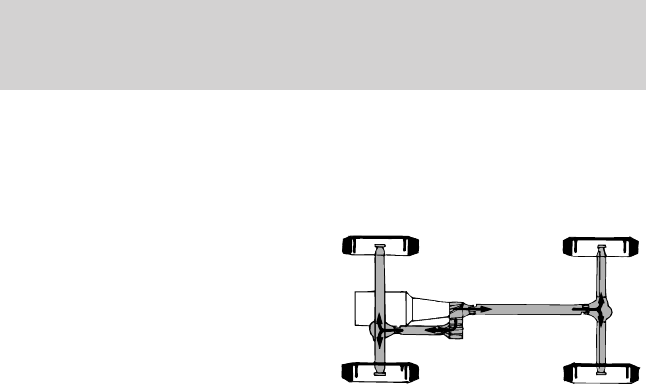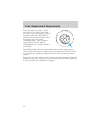
4WD AND AWD SYSTEMS
Your AWD or 4WD (when you select the 4WD mode) vehicle uses all four
wheels to power itself. This increases traction, enabling you to drive over
terrain and road conditions that a conventional two-wheel drive vehicle
can not.
Power is supplied to all four wheels
through a transfer case or power
transfer unit. 4WD vehicles allow
you to select different drive modes
as necessary. Information on shifting
procedures and maintenance can be
found in your “Owner’s Guide.” You
should become thoroughly familiar
with this information before you operate your vehicle.
Normal characteristics
On some 4WD models, the initial shift from two-wheel drive to 4WD
while the vehicle is moving can cause some momentary clunk and
ratcheting sounds. This is the front drivetrain coming up to speed and is
not cause for concern.
Utility and four-wheel drive vehicles are not designed for cornering at
speeds as high as passenger cars any more than low-slung sports cars are
designed to perform satisfactorily under off-road conditions. Avoid sharp
turns, excessive speed or abrupt maneuvers in these vehicles. Failure to
drive cautiously could result in an increased risk of loss of vehicle
control, vehicle rollover, personal injury and death.
Vehicle Characteristics
4


















